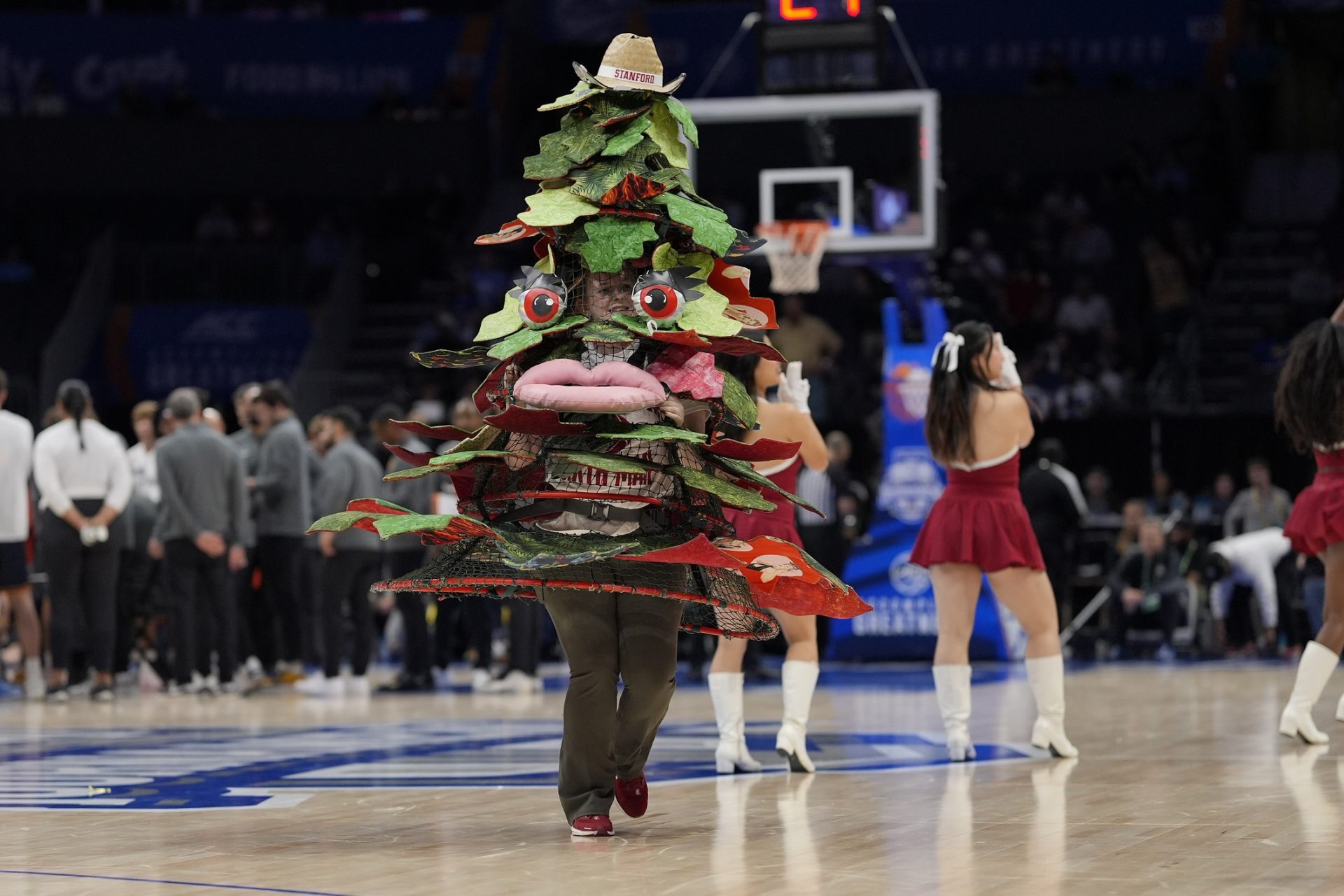Stanford University is surely one of the most prestigious institutions known. It is recognized for its academic excellence, powerhouse athletic programs, and… a tree? Yes, you read that right.
While other schools boast fierce animals or mythical warriors as mascots, Stanford marches to the beat of its own drum with the Stanford Tree. But how did this unusual symbol come to represent the school?

What Is the Stanford Cardinal Mascot?
Technically, Stanford doesn’t have an official mascot. Unlike most universities that feature a recognizable figure, Stanford’s athletic teams go by the “Cardinal.” Umm, well, it’s not the bird, but the color. The school made this change in 1972; It was when it dropped its original mascot, the Indian, in response to concerns about cultural appropriation.
So where does the infamous Stanford Tree come in?
The Tree isn’t actually the school’s official mascot but rather the symbol of the Stanford Band. It was the university’s notoriously offbeat and irreverent marching band. Since the mid-1970s, the Tree has taken center stage at games. They essentially become the face of Stanford athletics, despite never holding an official title.
The Tree is a reference to El Palo Alto. It is a redwood tree that appears on both the university’s official seal and the city of Palo Alto’s logo. It has evolved over the years into a walking, dancing, and occasionally chaotic figure at Stanford games.
Each year, a new student earns the right to don the costume. Especially through a wild selection process that involves elaborate stunts, public performances, and enduring various physical and comedic challenges.
Why Was the Stanford Cardinal Mascot Changed?
Before 1972, Stanford’s mascot was the Indian, a reference to the local Native American tribes of California. However, amid growing awareness of racial and cultural insensitivity, the Stanford community debated about its appropriateness.
After consultations with Native American students and local tribal leaders, university President Richard Lyman officially retired the Indian mascot.
This left Stanford without a traditional mascot, and the school eventually settled on “Cardinal” as its team name. This refers to the deep shade of red that had long been associated with the university.
However, the Stanford Band had other ideas. The team is pretty much known for its humor and antics; the Band created its own unofficial mascot: the Tree. Since its inception, the Tree has become a beloved, albeit unorthodox, staple of Stanford culture.
KEEP READING: Who Is Frank Reich? Veteran QB Who Brings His 14 Years of NFL Experience to Stanford
Over the years, it has undergone numerous design changes. This has often reflected the personality of the student inside. Some Trees have sported oversized googly eyes, mismatched branches, or even giant sunglasses. The costume itself is often homemade and tends to be comical and chaotic in appearance.
This system has led to some legendary Trees. Some have been arrested at games for excessive antics, while others have made national headlines for their outrageous behavior. In 2006, for example, the Tree was suspended after being caught drinking during a basketball game.
Another iteration of the Tree once had its costume confiscated for being deemed “too offensive.” Through it all, however, the Tree has remained a cherished (if sometimes controversial) part of Stanford lore.
In the end, Stanford’s approach to school spirit is a perfect reflection of its identity—intellectual, unconventional, and always marching to the beat of its own drum. And for those who love a little chaos with their college sports, the Tree is here to stay.
College Sports Network has you covered with the latest news, analysis, insights, and trending stories in football, basketball, and more!

